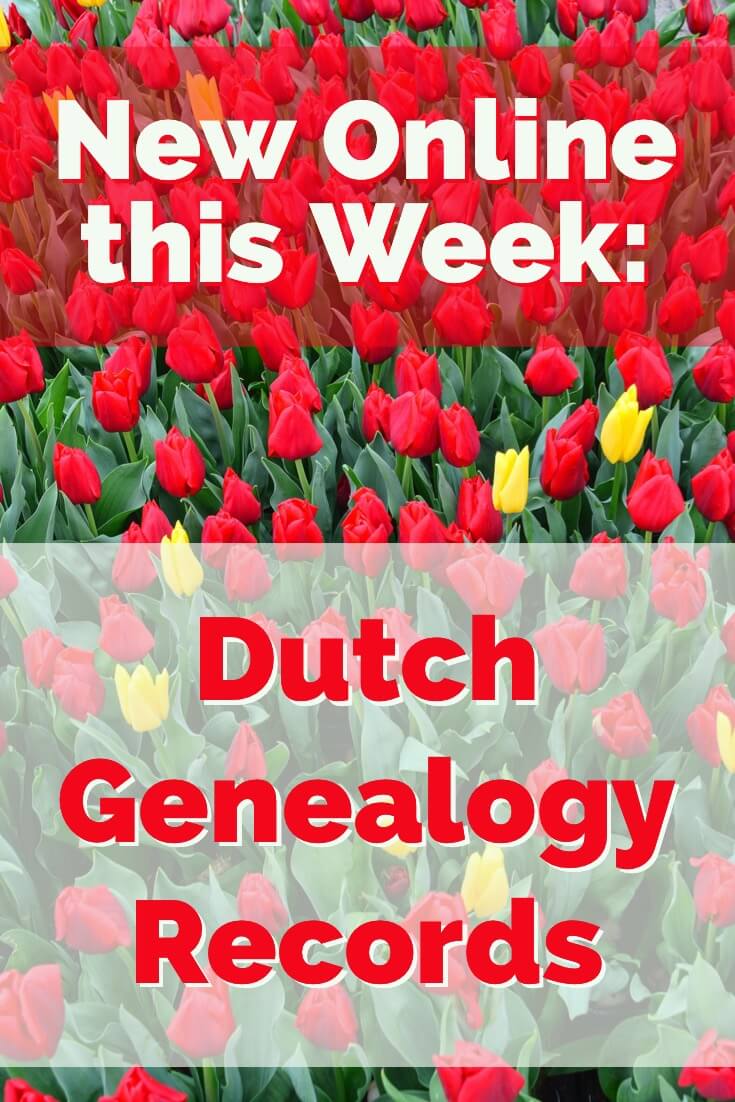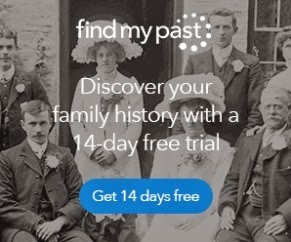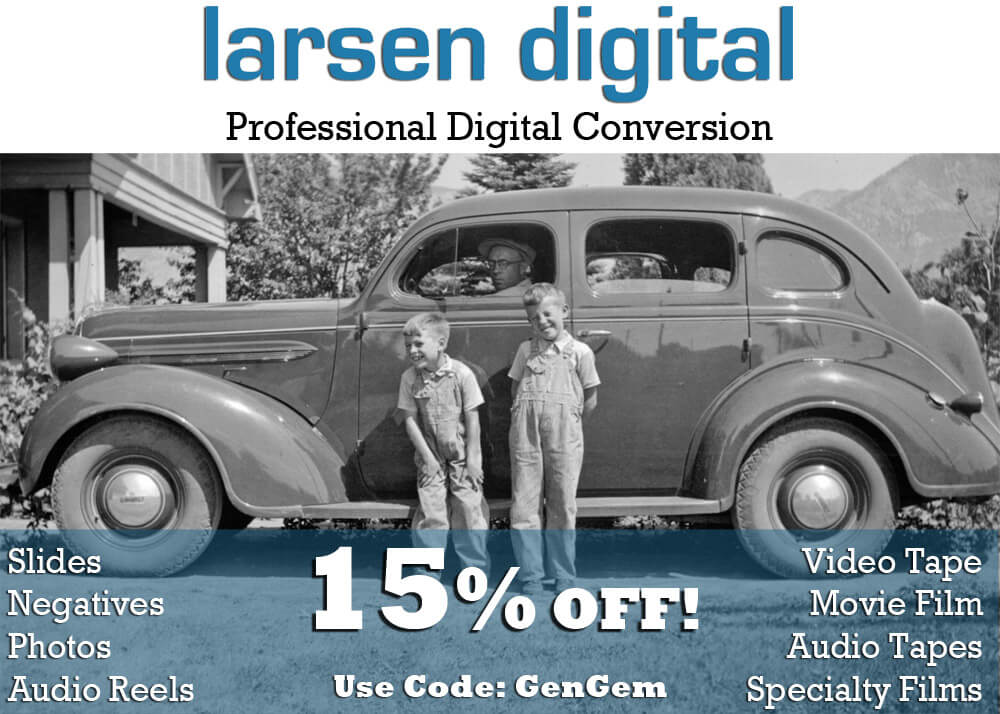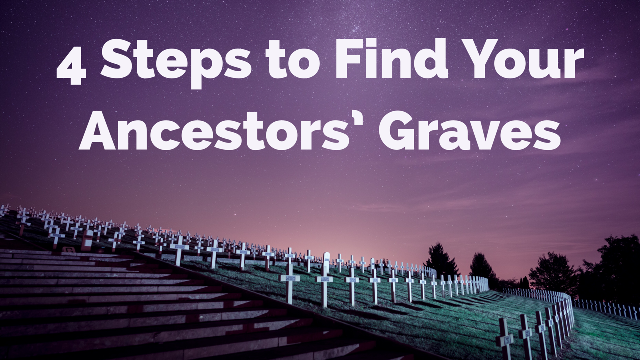Blog


Discover Your Dutch Ancestors & More in New Online Genealogy Records
Featured this week is a fantastic resource for anyone searching for Dutch ancestors! Open Archives recently celebrated reaching 200 million historical person entries and collaborates with dozens of libraries and genealogical societies to make them all available online in one place. Also featured this week is the Ireland 1911 Census, online access to the New York Death Index, and major new additions to records for Hampshire, England.
Featured: Dutch Records at OpenArchives
Recently, we received an email from a Genealogy Gems Podcast listener about a huge milestone achieved by the Open Archives website. This free site is home to the largest collection of references to persons in Dutch historical records, and they just reached 200 million historical person entries! If you are researching your ancestors in the Netherlands, this is a one-stop-shop to access the records you need, since Open Archives currently offers data from 86 organizations.
From the press release: “…dive into records of the civil registry, baptism, marriage and burial registers, notarial deeds, militia registers and personnel administrations. Prayer cards, family messages and funeral cards are also very useful for genealogical research. Archive institutions and also local history and genealogical societies manage these sources, which are increasingly being made available in digital form. Open Archives has made the person entries in these sources searchable in one place.”
Ireland 1911 Census
Following the recent addition of the 1901 Census, FamilySearch has now made available the Ireland 1911 Census. This new collection is comprised of over 4 million indexed records. Search for your Irish ancestors and this collection might reveal their name, age, occupation, relationship to the head of household, marital status, education/literacy, religion, birth country, and other information. The index is free on FamilySearch and was created by the National Archives of Ireland.
New York Death Index
At MyHeritage, you can now browse 4.7 million records in the New York State Death Index, 1880-1956. You’ll find information on place and date of death, gender, age at death and the State file number. The images in this collection have been obtained through the outstanding work and efforts of Reclaim the Records. Due to the poor original documents these images are low-quality. For deaths referenced in this index copies of original death certificates can be obtained from the New York State Department of Health for a fee.
Hampshire, England Records
British genealogy giant Findmypast has over 2 million new records now available to search online, with the majority relating to Portsmouth in Hampshire, England. These unique collections come from a wide variety of resources beyond standard vital records and could shed valuable light on your ancestors’ lives.
- Hampshire, Portsmouth, Portsea Island Rate Books: Over a million pages of poor rate books from as early as 1700 through to 1921. The books recorded the amount of rates paid at each property, ownership of the property, and its location in the parishes of Portsea and Portsmouth. With each record, you will find a transcript of the vital facts and an image of the original rate poor.
- Hampshire, Portsmouth Hospital Records: Assorted hospital records and medical journals from St James Hospital between 1878 and 1918. At that time, the hospital was known as the Portsmouth Lunatic Asylum. Includes civil registers, deaths, indexes to admissions and discharges, maintenance ledgers, patient notes, registers of discharge and transfers.
- Hampshire, Portsmouth Police Staff Records, 1908-1924: The Portsmouth Police Service was formed in January 1836 and the city had its own police force until 1967. The city’s fire brigade was also a branch of the police force when it was first formed. Review this collection for years of service, birthplace, physical descriptions, photograph portraits, and more.
- Hampshire, Portsmouth Quarter Sessions Browse: Thousands of criminal records from court Quarter Sessions. The browse search allows you to search each Session register from beginning to end. As well as the accused’s age, aliases and home parish, the records will provide you with a wide variety of details relating to their offense, trail and sentencing.
- Hampshire, Portsmouth Burials: Over 129,000 additional Portsmouth parish records. The new additions cover Portsea, Highland Road and Kingston cemeteries between the years 1831 and 1902. Transcripts will reveal a combination of the deceased’s birth year, death year, age at death, burial date, burial location, denomination, occupation, residence and relatives names.
Discover your British and Irish ancestors at Findmypast
Findmypast ranks as one of the Genealogy Giants: one of the world’s biggest and best genealogy websites. It’s a must-use site for tracing your roots in England, Scotland, Ireland and Wales. Findmypast also offers unique resources for finding your family history in the United States, Canada, and Australia. And their expansive archive of newspapers, Catholic Heritage Archive, and access to the Periodical Source Index mean that Findmypast is well worth a visit. Explore now with a free 14-day trial!

Lacey Cooke
Lacey has been working with Genealogy Gems since the company’s inception in 2007. Now, as the full-time manager of Genealogy Gems, she creates the free weekly newsletter, writes blogs, coordinates live events, and collaborates on new product development. No stranger to working with dead people, Lacey holds a degree in Forensic Anthropology, and is passionate about criminal justice and investigative techniques. She is the proud dog mom of Renly the corgi.
Disclosure: This article contains affiliate links and Genealogy Gems will be compensated if you make a purchase after clicking on these links (at no additional cost to you). Thank you for supporting Genealogy Gems!

Genealogy Gems Podcast Episode 224
Genealogy Gems Podcast Episode 224
In this episode we recap 2018, and explore additional ideas to help you organize your home movies. Whether you have 8MM film, VHS tapes, Mini DV tapes or DVDs, this episode has what you need to preserve and organize them.
Download the Show Notes PDF in the Genealogy Gems Podcast app.
Lisa’s Recent Travels
Swedish Genealogical Society in Edina, MN and a side trip to Winthrop, MN.

Above: Speaking at the Swedish Genealogical Society

Above: Bill (left) with his new found Larson cousin.
Oslo Norway – MyHeritage

Above: Speaking at the MyHeritage conference in Oslo, Norway

with my genealogy crew at the Viking Ship Museum in Oslo, Norway
Read Are You Part Viking? By Anna Swayne
A Visit to Sweden

Above: Lacey in Gothenburg, Sweden
Mailbox
High school teacher Lindsey called in to share an unexpected occurrence of genealogy serendipity.
Here the original Genealogy Gems Podcast episode 185 where George Ella Lyon reads her poem.
Read more about and watch the video I created for Tom Boyer of his Where I’m From Poem
MyHeritage.com is the place to make connections with relatives overseas, particularly with those who may still live in your ancestral homeland. Click here to see what MyHeritage can do for you: it’s free to get started.
Give the gift of story with Storyworth
StoryWorth gives your loved ones a reason to spend time with their favorite memories and share them with you giving you opportunities to become closer, even when you live far apart. It’s an easy and thoughtful gift even at the last minute.
Get $20 off by visiting storyworth.com/gems when you subscribe. Again $20 and you’ve got a gift that keeps on giving. Visit Storyworth.com/gems
Followup on GGP 223
I’m organizing and digitizing my Grandmother’s old home movies with Video Conversion Experts. I told my uncle about it and now he’s sending me the rest of his old home movies! Video Conversion Experts is the company that Dr. Haas used to convert his films. They did an exceptional job in post production restoration, and are known for this work in the film industry. They are the ideal company to go with if you want to invest in the highest quality of restoration. They are currently running a terrific 35% off sale now through 12/21/18.
I’m digitizing my family’s High 8 home movie tapes with Larsen Digital. The list of mediums that they can digitize is one of the most extensive I’ve seen. They are even able to digitize the unmarked audio tape that I found among my grandmother’s home movies. Kristin and her team are well known in the genealogy community and are based in Utah. They have graciously extended a 15% off to my listeners. Use the coupon code: GenGem. Discount is valid on: video tapes, movie film, audio reels, audio tapes, slides, negatives, photos & specialty film.
Your feedback on episode 223
On Instagram from Erin:
“I loved this episode Lisa! Anna’s song is so beautiful too! I learned a lot and the way you shared this story was wonderful. A favorite gem for sure.”
From Greg in New Zealand:
“I’m loving the new narrative/profile episodes and had noticed the evolving voice and style in GGP 223. You and your team are wonderful writers…David Haas’ story reminded me of my good friend Mark Holtze. An editor in Toronto, Mark has digitised all of his grandfathers’ 16mm vacation films from across Canada in the 50s, 60s and 70s. They are brilliantly presented. Mark is very talented. I think they’re worth sharing with your listeners. I don’t know Mark’s connection to this posting specifically but it’s an amazing one on his playlist.”
I couldn’t agree more! Here’s the description of the video: A number of 8mm film reels were purchased at a Flea Market in New York City for $10. They ended up being home movies taken in the late 40’s and 50’s. How they ended up at a Flea Market in Manhattan all those years later is one thing, but most importantly was getting the films reconnected with the family. …60 years later….
Thank you to our sponsor:
I’ve used RootsMagic for years and love it. You will too!
Organizing the videos you find online
After listening to episode 223, Kate was inspired to head to YouTube in search of videos that illustrate her memories. She writes:
“I’ve been trying to set up a collection of my memories on you tube. Do you have any thoughts on to put this together? Is it possible to add clips and not full videos?”
My suggestions:
YouTube: Organize with playlists
You can use Playlists to group the videos you find by topic. You could create playlists for locations, timeframes, people and so on. Sign in with your free Google account which will give you access to your YouTube “channel.” When you find a video, under the title of the video click the plus sign that says “Add to”. Select a playlist from the playlists listed in the dropdown menu. These are playlists you have already created in your account. If it’s a long list, use the search box to search for a playlist title. Or create a new Playlist by clicking “Create New Playlist” at the bottom of the menu.
Unfortunately, YouTube doesn’t give you a way to add your own notes. And you can’t create clips of videos (at least not as of this writing), but I do know that when you share a video you can mark that it start at a point in the video that you select. Which brings me to my next suggestion…
Pinterest: Organize Videos into boards on Pinterest
If you would like to have even more control over organizing the videos that you find, and you want to be able to add your own notes and memories, consider using Pinterest. In your free Pinterest account you can create as many boards as you want. Create a board for each topic (much like with the Playlists I suggested previously) and save YouTube videos to them. And of course, you can save any other online content “memories” that you find along with them if you want. The beauty of pinning is that you can add your own notes and memories, plus you can set the video to begin at any point within the video that you want. Simply click “Share” under the video in YouTube, and click to check the box for “Start at.” Next, click on the player timeline that runs across the bottom of the video on the spot where you want the video to begin playing. Finally, click the Pinterest icon in the Share area to pin it to your Pinterest board of choice.
Profile America: TV Tech
Thursday, December 13th. The important holiday business of viewing such classics as “It’s A Wonderful Life” and “A Christmas Story” on home TVs owes much to a technological advance this month 80 years ago. In December 1938, Russian-American engineer Vladimir Zworykin was awarded two patents for cathode ray tubes. One was for the iconoscope to capture video images. The other was for the kinescope, which displayed television and computer monitor images for decades until the advent of flat panel screens. Whatever the ills of TV programming, obviously the American people consider it an appliance for a wonderful life. More than 98 percent of American households own at least one set, a percentage that has held steady for years and across all age groups.
PRODUCTION CREDITS
Lisa Louise Cooke, Host and Producer,
Editor Hannah Fullerton, Audio Editor
Lacey Cooke, Service Manager
Disclosure: As an Amazon Associate, Genealogy Gems earns from qualifying purchases you make when clicking from the links we provide. It doesn’t cost you anything extra but it helps support our free blog and podcast. Thank you!

U.S. Cemetery Records & More New Online
Find your ancestors in U.S. cemetery records and more in these week’s roundup of new records available online. All resources below come from free websites and also include vital records, court records, county records, and various historical collections. If you’re researching Jewish ancestors, be sure to check out a wonderful free Jewish collections website for resources and databases.
New U.S. Records Free at FamilySearch
FamilySearch has several new U.S. records collections online now. They may be small, but your ancestor just might be lurking in these indexes!
Arizona, Gila County, Cemetery Records, 1927-1994. Browse 3,500 records in this collection of cemetery records from the Dudleyville, Ft. Grant, Mammoth, Superior, Ray, and Hayden cemeteries in Gila County, Arizona. These records may tell you the name of your ancestor, birthplace and date, death date, parents’ names, children and spouse names, and even sibling names.
Idaho, Madison County Records. There are 2,300 indexed records in this new collection, as well as 34,000 browsable images. In this collection you’ll find vital records, homesteads, patents, deeds, mining records, and Wills and probate records.
Tennessee, Jackson County Records, 1801-1974. Marriage records and records of the Chancery and Circuit Courts are available in this new collection of nearly 14,000 indexed records and 18,000 images. This collection is being published as images become available.
Florida, Index to Alien Arrivals by Airplane at Miami, 1930-1942. This unique collection has 51,000 indexed airplane manifests. The collection is set up by index cards, arranged alphabetically by surname. These records correspond with NARA publication A3382 and were filmed at the NARA facility in College Park, Maryland.
Virginia, County Marriage Records, 1771-1943. Browse almost 40,000 indexed marriage records and images in this collection. The records include registers, bonds, licenses, and returns for the following counties: Accomack, Franklin, Giles, Rockingham, and Westmoreland. The content and time period varies by county.
Jewish Records & Collections
FamilySearch also has a new collection of Virginia, Jewish Cemetery Records Index, ca. 1800-1986. Included is an index to maps 1-45 of the Jewish cemetery records compiled by Samuel and Dorothy Werth. The original maps are located at the Virginia Historical Society. These cemetery records may be able to tell you the name of deceased, their year of birth, year of death, the name of the cemetery, and the city where the cemetery is located.
Another great resource for finding Jewish ancestors is the Jewish Digital Collections website. You can explore an annotated list of more than 350 sites containing digitized collections of Jewish history, records, culture, and more. The list is divided into 22 categories, which are alphabetized into drop-down menus. You may also be interested in their Jewish Studies Guides, which have been prepared by university librarians worldwide to help students taking courses in Jewish studies. They may lead you to additional resources and materials.
More to learn about cemetery records
Cemetery research is a crucial family history skill. Tombstones are monuments to our ancestors’ lives and may have key genealogical clues engraved in the stone. Learn more about how to find them with these four steps to finding your ancestors’ burial places and the records that complement them.
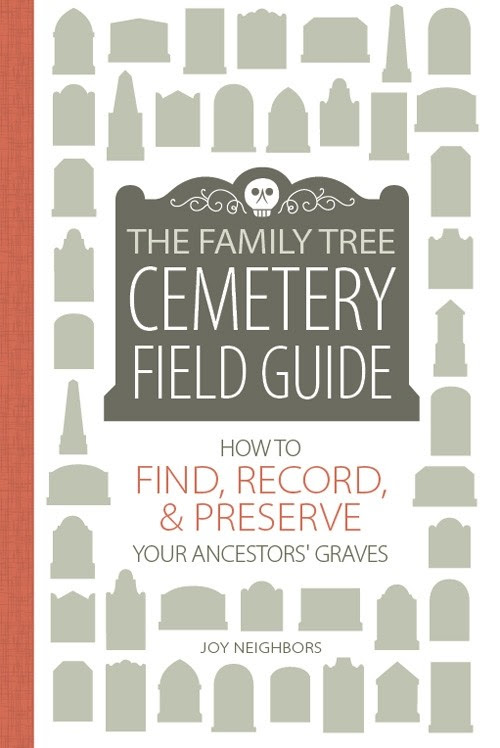 For a comprehensive guide on finding your ancestors in cemeteries, grab a copy of The Family Tree Cemetery Field Guide. This book contains detailed step-by-step instructions for using FindAGrave and BillionsGraves, plus guides for understanding tombstone epitaphs and symbol meanings. Discover tools for locating tombstones, tips for traipsing through cemeteries, an at-a-glance guide to frequently used gravestone icons, and practical strategies for on-the-ground research. Click here to order yours today!
For a comprehensive guide on finding your ancestors in cemeteries, grab a copy of The Family Tree Cemetery Field Guide. This book contains detailed step-by-step instructions for using FindAGrave and BillionsGraves, plus guides for understanding tombstone epitaphs and symbol meanings. Discover tools for locating tombstones, tips for traipsing through cemeteries, an at-a-glance guide to frequently used gravestone icons, and practical strategies for on-the-ground research. Click here to order yours today!

Lacey Cooke
Lacey has been working with Genealogy Gems since the company’s inception in 2007. Now, as the full-time manager of Genealogy Gems, she creates the free weekly newsletter, writes blogs, coordinates live events, and collaborates on new product development. No stranger to working with dead people, Lacey holds a degree in Forensic Anthropology, and is passionate about criminal justice and investigative techniques. She is the proud dog mom of Renly the corgi.
Disclosure: This article contains affiliate links and Genealogy Gems will be compensated if you make a purchase after clicking on these links (at no additional cost to you). Thank you for supporting Genealogy Gems!

